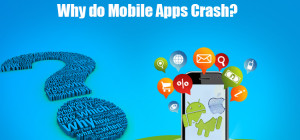
Augmented Reality provides awesome experiences and it changes the way we see our world. AR applications are being used in several areas like education, healthcare, shopping, gaming etc. Here, we will discuss the top 15 augmented reality development SDK (Software Development Kits), which are used to develop AR applications.
1. Vuforia
Vuforia is the most popular Augmented Reality SDK, which provides great features to develop Augmented Reality applications for phones and tablets. Vuforia provides the benefits of adding Computer Vision in Android, IOS and UWP applications, and allows us to create efficient AR experiences that realistically interact with objects in the real-world environment. It is natively integrated with the Unity Game Engine and can be downloaded and installed via Unity Installer. It includes features:
- Model Targets are the physical objects which are recognized and tracked with the 3D model of the object
- Ground Plane is used for placing objects on horizontal space in our environment
- Image Targets or flat images are used for print media and product packaging
- VuMarks are used for augmenting and identifying objects as part of a series, such as consumer products or toys
- Multi-Targets are used for collections of Target Images in a defined arrangement
- Cylinder Targets enable us to use bottles and cans, or any cylindrical image, in AR apps
- User Defined Targets provide flexibility to use camera images, captured by us, as Image Targets
Type: Free + Commercial SDK
Current SDK Version: 7
Supported Platforms: Android, IOS, Windows Phone, Unity Editor
Pricing: Free (Limited Version With Watermark), Paid (Version & Price depend on License Category)
Download Vuforia SDK Here.
2. Wikitude

Wikitude is the oldest augmented reality SDK tool, which provides the best experiences for geolocation technologies, Video Overlay, Image Recognition, Image tracking, Location-Based AR, and 3D Model Rendering etc. Wikitude SDK 6 (Latest Version) includes SLAM (Simultaneous Localization And Mapping), a technology which enables Object Tracking and Recognition, and Markerless Instant Tracking. Wikitude SDK includes several more features:
- Offline Object Recognition and Object Tracking
- Offline 2D Image Recognition and 2D Image tracking
- Cloud 2D image recognition and tracking (in addition, extended tracking in the latest SDK)
- Distance to Physical Target
- Geo-Location Scenes
- Geo-Fence Triggers
- Radar UI Element
- Relative Locations
- Distance-Based Scaling
- Augmentations and Visualizations (including Full customization of AR view, Integrated Rendering Engine, Texts, Images, Animated Images (or Sprites), Videos (including Transparent Videos), Sound, HTML Widgets, Static and Animated 3D Models)
Type: Free + Commercial SDK
Current SDK Version: 7
Supported Platforms: Android, IOS, Windows Phone, Unity Editor, Smart Glasses
Pricing: Free (Limited Version With Watermark), Paid (Version & Price depend on License Category)
Download Wikitude SDK Here.
3. ARToolKit

ARToolKit is an open-source library used to create augmented reality applications that detect 2D Images and overlay virtual 3D objects in the real-world environment. ARToolKit SDK is maintained as an open-source project, which is hosted on the Github Platform. It is a multi-platform SDK; it runs on Windows, Mac OS, Linux, Android, and iOS. It includes features:
- Supports square marker, multimarker, and 2D barcode
- Robust and Efficient Tracking (including Natural Feature Tracking Functionality)
- Simultaneous Tracking
- Provides Solid Camera Calibration Support
- Stereo Camera Support
- Multiple Language Supported
- Provides Unity3D and OpenSceneGraph Support
- Optimized for Mobile Devices (Android, iOS)
- ARToolkit uses Computer Vision methods and techniques to calculate the device’s camera position and orientation relative to the flat textures surfaces or square shapes, which allow programmers to overlay virtual objects
- Provides fast and precise tracking
Type: Open Source
Current SDK Version: 5
Supported Platforms: Android, IOS, Windows Phone, Windows (PC), Mac OS, Linux, Unity Editor
Pricing: Free + Open Source
Download ARToolKit SDK Here.
4. ARKit

IOS SDK 11 has introduced a new framework called ARKit, which enables developers to build great augmented reality experiences for Apple’s iPhone and iPad devices. Some of its features are:
- It combines advanced scene processing, device motion tracking, and camera scene capture, and display conveniences which simplify the development of AR applications
- It provides fast and stable motion tracking by using Visual-Inertial Odometry (VIO), which blends the device’s Core Motion data and camera sensor data to get a better understanding of how the device is moving around the real space
- Provides better Light Estimation, because it uses the camera sensor to better estimate the amount of light present in the current scene, and applies that estimated amount of lighting on virtual objects
- Supports SceneKit and other third-party tools like Unity and Unreal Engine
- Provides High-Performance, because it runs on A9 and later processors (which are known for excellent performance), allows developers to create detailed and high-graphics contents
Type: Free
Current API Version: 1.5
Supported Platforms: iOS
Pricing: Free
Download ARKit SDK Here.
5. Kudan

Kudan is the Augmented Reality SDK used to create AR apps for mobile devices like iOS and Android. Written in C++ and Assembly, it provides the benefits of fast execution, robust performance, and minimum memory footprints, which make Kudan the main rival of Vuforia SDK. It uses SLAM technology to recognize 3D objects and 2D images. Kudan SDK includes the following features:
- Provides native platform APIs, such as Objective-C for iOS, and Java for Android
- Supports the Unity Game Engine and enables developers to create Cross-Platform AR apps
- Used for Advanced IOT (Internet of Things) and AI (Artificial Intelligence)
- Makes use of Instantaneous SLAM (Simultaneous Localization And Mapping) with high-quality models
- Can be used for both marker and marker-less operations
- Flexible to work on mobiles, Head-Mounted Displays, and Robotics applications
Type: Free + Commercial SDK
Current SDK Version: 1.5
Platform: Android, IOS, Windows Phone, Unity3D Cross-Platform Development
Pricing: Free (Unlimited Version With Watermark), Paid (Version & Price depend on License Category)
Download Kudan SDK Here.
6. EasyAR

EasyAR comes with two editions: EasyAR SDK Basic and Pro. EasyAR SDK Basic supports planar targets, smooth loading and identification for 1000+ targets, video playback which is based on HW codecs, streaming and transparent videos, QR code recognition, multitarget tracking (simultaneously).
EasyAR Pro was introduced in SDK version 2.0 and it contains all EasyAR SDK Basic features and adds more features like 3D object tracking, SLAM, and screen recording.
Type: Free
Current SDK Version: 2
Platform: Android, IOS, Windows (PC), Mac, Linux, Windows Mobile Unity Editor
Pricing: Free (Limited Version With No Watermark), Paid (Unlimited Version, $499/License Key)
Download EasyAR SDK Here.
7. MaxST

MaxST SDK is an AR engine used to develop augmented reality applications. It comes with the all-in-one SDK package and includes 5 main features.
- Image Tracker
It tracks and recognizes planar target images, transparent videos, 3D models, and 3D animations
- Instant Tracker
It finds the planar or flat surface through a camera frame and scans the surroundings so that we can accurately place 3D objects onto the surface with correct positioning and alignment.
- Visual SLAM
It creates and saves 3-dimensional maps of target spaces.
- Object Tracker
It loads map files (which were created and stored with Visual SLAM) and overlay Augmented Reality experiences on them.
- QR/Barcode Scanner
It recognizes barcodes and also QR codes.
Type: Free + Commercial SDK
Current SDK Version: 3
Platform: Android, IOS, Unity Editor, Windows (PC), Mac OS, Smart Glasses
Pricing: Free (Unlimited Version With Watermark), Paid (Version & Price depend on License Category)
Download MaxSt SDK Here.
8. Xzimg

Xzimg provides three SDK products to create AR applications for mobile devices:
- Xzimg Augmented Face
It consists of high-quality face tracking features. Xzimg Augmented Face is an efficient tool to create AR face-tracking experiences.
- Xzimg Augmented Vision
It consists of high-quality markers and image tracking functionalities which enables the development of Augmented Vision based apps, like Car Eco-systems, industrial prototypes etc
- Xzimg Magic Face
It consists of high-quality deformable face tracking features which provide robust and real-time AR experiences. Xzimg Magic Face is an efficient tool to create make-up and face replacement based applications.
Applications developed on these three SDKs can be deployed on Windows (PC), Mobiles (Android & iOS), and HTML5 compliant browser through the Unity plugin system. Finally, the trial versions of these SDKs are free, and we can only use for demonstrations.
Type: Free + Commercial SDK
Platform: Android, IOS, Unity Editor
Pricing: Free (No Application License, Watermark Added), Paid (Unlimited Application Licenses, Price: €1600 single-user license)
Download XZimg SDK Here.
9. NyARToolKit
It is the augmented reality library based on ARToolKit. It is the shorter and simplified version of ARToolKit, currently used for object or image recognition and natural feature tracking. The library is easy to integrate, but its English version is not currently available.
Type: Open Source
Current Version: 5
Platform: Windows (PC), Unity Editor
Pricing: Free
Download Source Code Here.
10. ARCore

Google has released its own augmented reality Software Development Kit (SDK) for Android Developers. It’s built on Tango technology but works across Android devices without having to add any hardware system. ARCore provides three key features to connect virtual objects with the real world:
- Motion Tracking allows the device (tablet or phone) to understand and track its current position relative to the real world environment
- Environmental Understanding enables the device to detect the location and size of horizontal and flat surfaces (ground or table)
- Light Estimation allows the phone to analyze and estimate the current lighting conditions of surroundings.
ARCore API is now part of Android SDK 7 and above. We can download and install it from the Android SDK Manager.
Type: Free
Current Version: 1
Platform: Android, Android NDK, Unity, Unreal, Web, Java/OpenGL
Pricing: Free
Download ARCore Here.
11. AR-Media

ARMedia SDK consists of tracking and rendering modules that can be used to implement different tracking and recognition methods, including 3D object recognition, 2D object recognition, Planar Image, Geo-Location and Motion Tracking. ARMedia SDK also identifies complex 3D objects regardless of their geometry and size.
The SDK also provides a Unity Plugin, which allows us to integrate all tracking features in Unity 3D applications.
Type: Free + Commercial SDK
Current SDK Version: 2
Platform: Android, IOS, Windows Phone, Web, Windows (PC), Mac OS, Linux, Unity Editor
Pricing: Free (Limited), Paid (Price depend on the License Category)
Download ARMedia SDK Here.
12. Metaio

A company originated by Thomas Alt and Peter Meier and now acquired by Apple, also provides augmented reality SDK. The free version (with a watermark) is supported on Windows, iOS, and Android with an additional Unity3D plugin. Metaio SDK consists of its own scripting language called AREL (Augmented Reality Experience Language). AREL enables you to develop Augmented Reality apps using Web Technologies like XML, HTML5, Javascript. It includes features:
- 2D Image Recognition
- 3D Image Recognition
- Face Tracking
- Location Tracking
- SLAM (Simultaneous Location And Mapping)
- Barcode Scanning
- QR Code Scanning
- Continuous Offline and Online Visual Search
- Gesture Detection
Type: Free + Commercial SDK
Current SDK Version: 6
Platforms: Android, IOS, Web, Windows (PC), Mac OS, Unity Editor, Google Glass, Epson Moverio BT-200 and Vuzix M-100
Pricing: Free (Watermark), Paid (Unlimited with No Watermark)
Download Metaio SDK Here.
13. Aurasma

Aurasma is an augmented reality development platform available as SDK and as a free mobile app for iOS and Android. Using the device’s camera, compass, accelerometer, GPS, and internet connection, Aurasma technology combines the image recognition and conceptual understanding of the 3D world to identify and recognize objects and images and merge augmented reality experiences into the scene.
Type: Free + Commercial SDK
Current SDK Version: 3
Platform: Android, IOS, Unity Editor
Download Aurasma SDK Here
14. CraftAR

Catchoom CraftAR SDK allows us to create our own augmented reality experiences by linking real-world objects like products or magazines to videos, websites and 3D models. It includes features:
- Image Recognition
- Open AR experience related to matched item
- Switch between Single Shot Mode (one photo) and Finder Mode (Continuously Scanning)
- Works on both offline and online modes
- Can run offline with no cloud support necessary and one can access the cloud whenever needed
Type: Free + Commercial SDK
Current SDK Version: 2
Platform: Android, IOS, Web, Windows (PC), Mac OS, Linux, Unity Editor
Pricing: Free (Limited Version With 20 Images and 1000 Cloud Visual Scans), Paid (Version limitation & Price depend on the License Category)
Download CraftAR Here.
15. ARLab
ARLab SDK is also used to create augmented reality applications for Android and iOS devices. It focuses on two of its major features: Image Matching and Image Tracking. More features include:
- Real-Time Image Recognition
- Match multiple images at a time
- Works Offline (no internet connection required)
- QR codes detection
- Real-Time Image Tracking
- Extreme or very high angles (90-degree rotations)
Type: Free + Commercial SDK
Current SDK Version: 1
Platform: Android, IOS
Pricing: Paid (€299/per app)
Download ARLab Framework Here.
We hope this list helps you make your choice. These are not the only ones out there but they are surely the most popular and usually that popularity is justified. If you have experience with any of this feel free to share your impressions.









